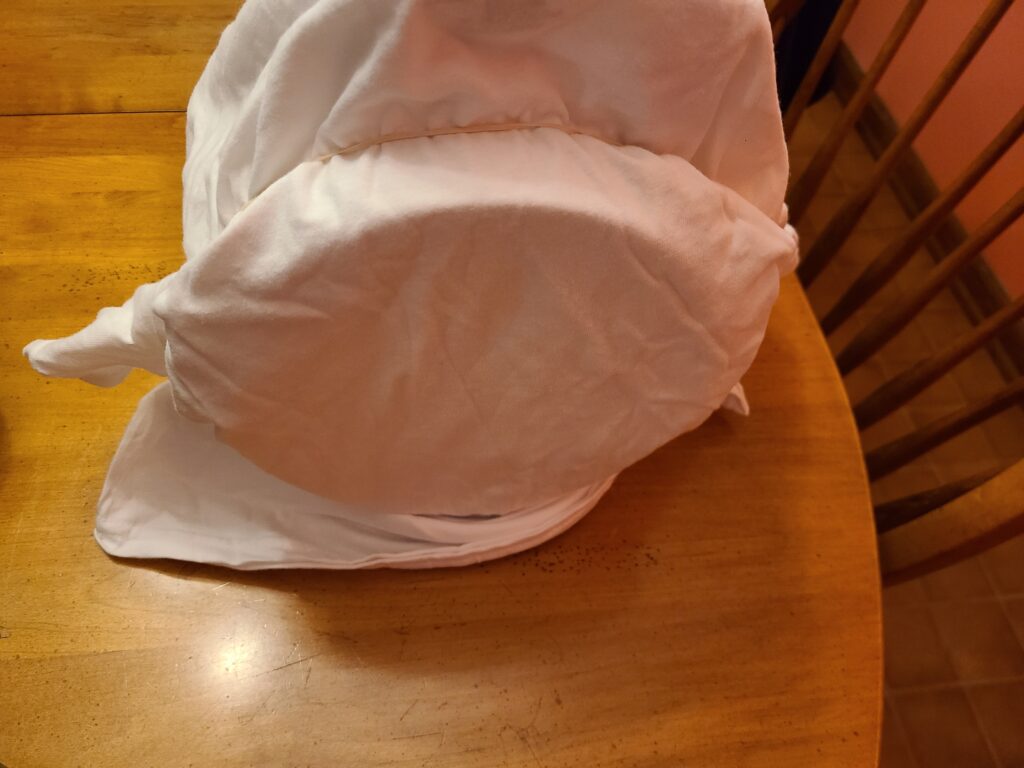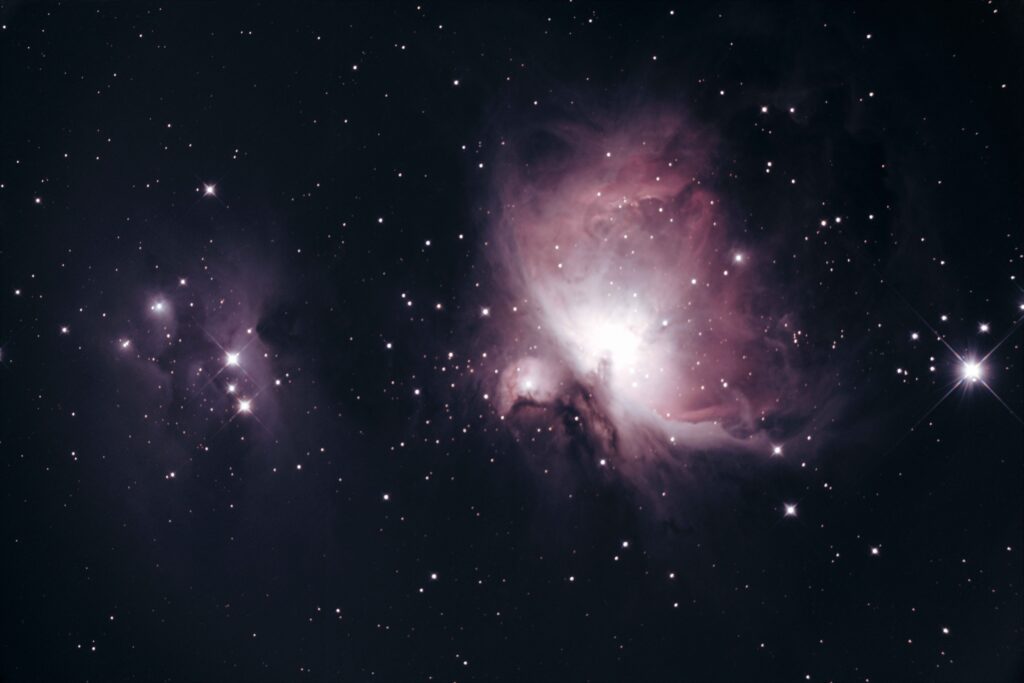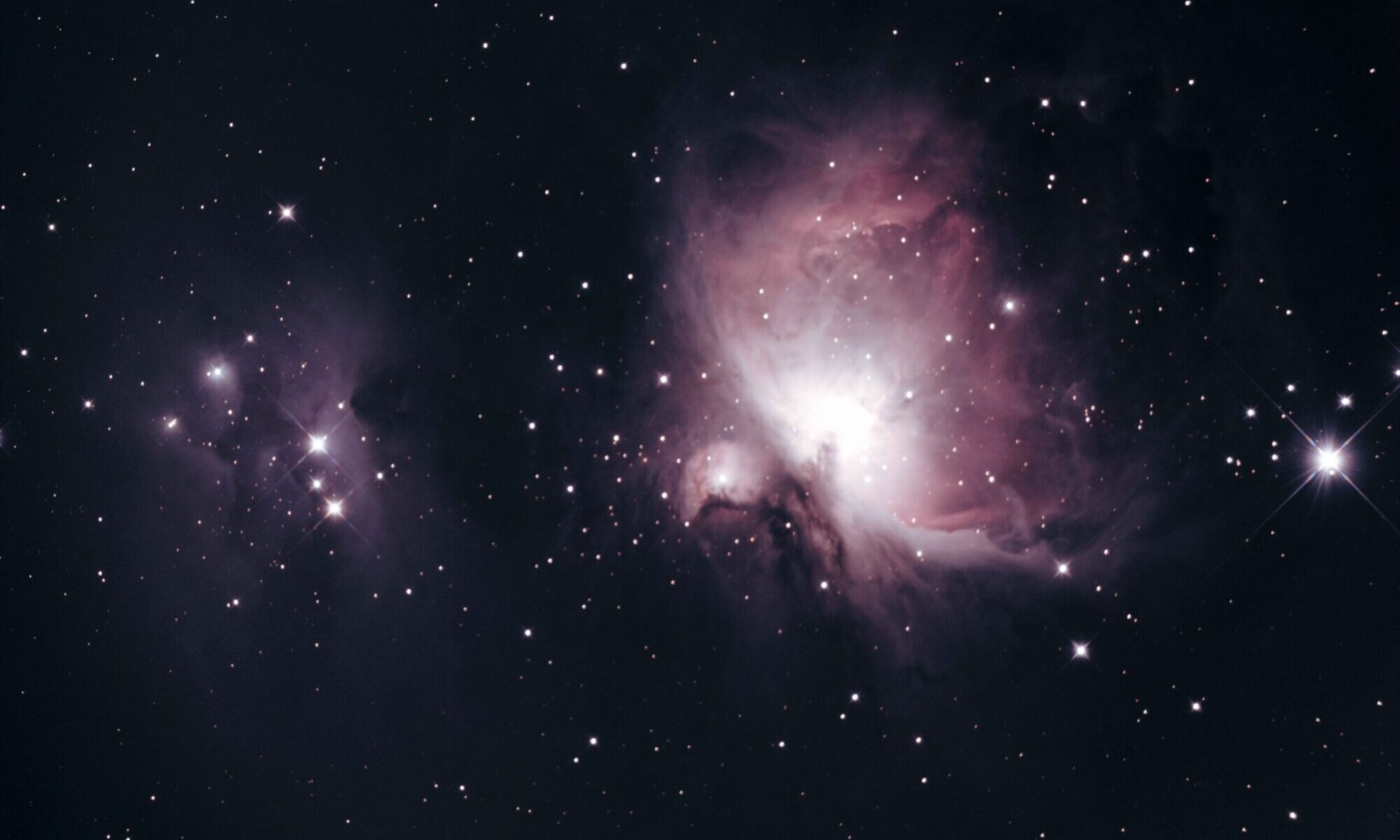It took a little while to perfect it, but the T-Shirt trick works for capturing flats. Unlike my previous attempts, I bought a clean, new white shirt. I gently stretched it over my scope and secured it with a rubber band. I made sure to maintain the same focus I used for my light frame exposures. And, the best trick of all, I switched my camera’s mode to “Av” on my Canon Eos Ra (an amazing Christmas gift from my brother!). The mode automatically picks the correct shutter speed to produce the proper exposure for the flat frame.

As for my light source, I’ve been shooting in my backyard lately. So, once I finished taking my light exposures and my darks and I’m getting ready to pick up, I turn on my white LED porch light. From there, all I need to do is point my score at the light. It’s just as good as using an all-white LCD tablet or laptop screen or resorting to a light box. Except, it doesn’t do my a lot of good when I’m not shooting from my backyard. So, I’ll need to find a good portable light source when I’m working remotely.
Here’s the result of plugging my new flat frames into Deep Sky Stacker and doing some newbie image processing on them in Photoshop. It looked so nice, I had it printed and matted at FedEx Kinkos. Ultimately, you can see how that distorted ring of brightness from the last post is gone now, averaged out by DSS with the flats!

The next step for me is to learn more about image processing in Adobe. Right off the bat, I can share just how great the “arcsinh” curve stretches are for performing color-preserving stretches of the TIF file data. The guy who designed these stretches for PixInsight, which is the super expensive astrophotography editing software, created these stretches for Adobe and he explains it all in this post on the Cloudy Nights forum here. Definitely pick these up and install them if you’re using Photoshop for Astrophotography; they’re free.
Here’s a quick and dirty bit of imaging I did using the arcsinh stretches to draw out my images with only a couple hours of exposure time at my local observatory. Granted, the EOS Ra also helps a lot with image quality, too. And even still, there’s a lot that could be done to improve these images of M81 and M82, the Bode Galaxy and Cigar Galaxy, respectively.

I grabbed 4 hours of exposure time of the Whirpool Galaxy, M51, which was the deep sky target I cut my teeth on over last summer. Assuming I can find some time this weekend, I’m hoping to process that TIF file in adobe and try some more advanced techniques I learned, like creating star masks to preserve star color, tricks to remove light pollution, and (not so advanced) ways to “feather” my lasso’s deselections so I can play with the galaxy separate from the stars and vice versa.


